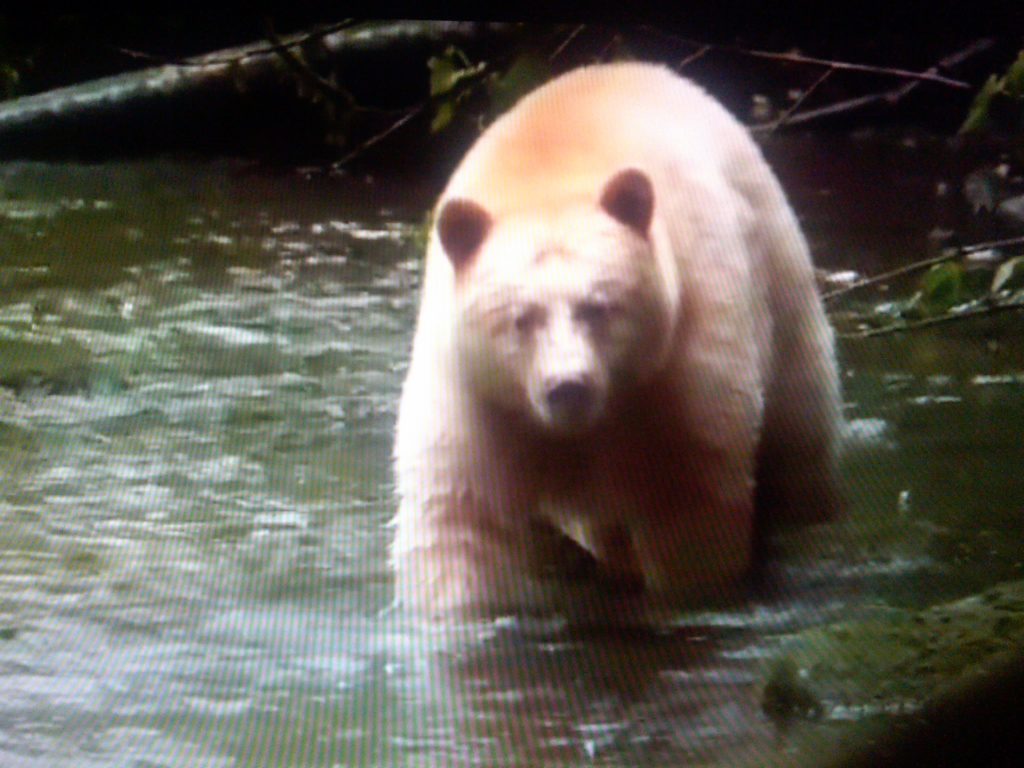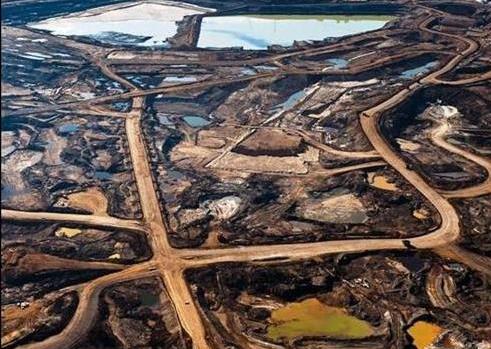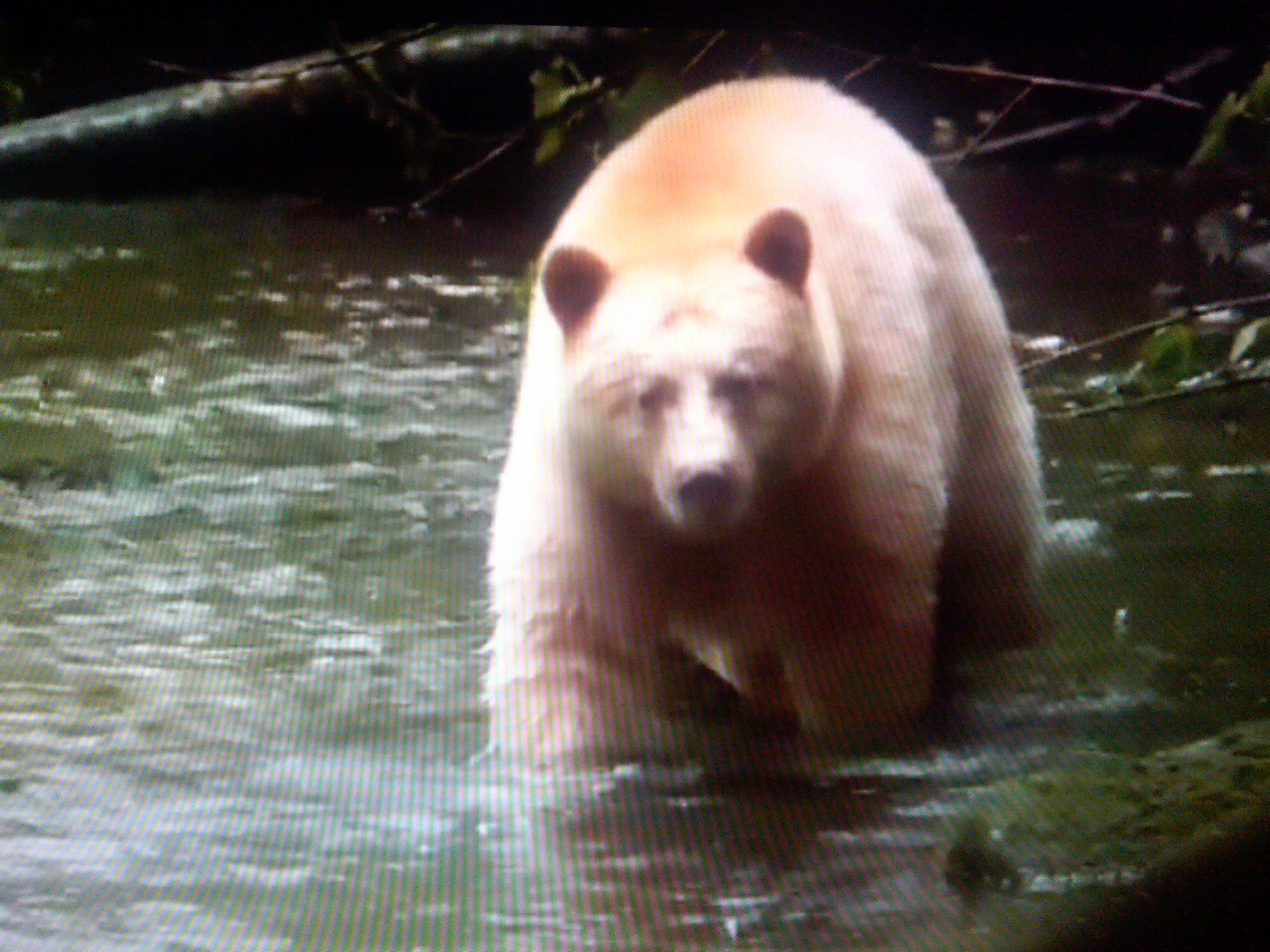The Northern Gateway Pipelines would have threatened British Columbia’s Great Bear Rainforest, home the Kermode white spirit bear, enabling the destructive Alberta oil sands. Upon taking office in 2015, Prime Minister of Canada Justin Trudeau imposed a ban on oil tanker traffic on the North Coast of British Columbia, effectively killing the project. Yet, the tar sands industry will keep trying…


Toxic Mix: Tar Sands Oil – Tankers – Pristine Wilderness
The Enbridge Inc. Northern Gateway Pipelines project would transport heavy bitumen crude to the Pacific Coast, threatening the Great Bear Rainforest, whose channels through British Columbia’s Coast Mountain Range to the Pacific would be opened to oil tanker traffic. The ancient Great Bear is one of the largest tracts of temperate rainforest left in the world (2 million hectares), home to thousands of species of plants, birds and animals. In this lush forest ecosystem stand 1,000-year-old cedar trees and 90-metre tall Sitka spruce. Rich salmon streams weave through valley bottoms that provide food for magnificent creatures such as orcas (killer whales), eagles, wolves, black bears, grizzlies, and the rare and mysterious white Kermode (Spirit) bear.
httpvh://www.youtube.com/watch?v=S3bKmz4od3g
spOIL: Documentary on the Great Bear Rainforest, threatened by the Alberta Tar Sands pipelines, by EP Films.
The Northern Gateway project would connect the tar sands of Alberta with the coast in BC, crude bitumen oil flowing west enroute to supply PetroChina as well as imported natural gas condensate flowing in the eastbound pipeline.
According to Chris Genovali from Raincoast, a spokesperson for Enbridge recently claimed that the chance of a catastrophic spill from the oil tanker traffic which would accompany the energy giant’s proposed pipeline from the Alberta tar sands to British Columbia’s north coast was “one in 15,000 years.”
However, the “independent risk analysis” commissioned by Enbridge suffers from industry’s usual self-serving biases, primary amongst these being an over-emphasis on imprecise and unknowable probability as opposed to impact or consequence.
Consider in 2010 a 30-inch oil pipeline owned by Enbridge suffered a 4-foot-long rupture and spilled nearly 20,000 barrels — 840,000 gallons — of oil into the Kalamazoo River in Michigan, killing much of the aquatic life for miles. It was the worst spill ever in the Midwest.
As well, the recent ExxonMobil Silvertip pipeline rupture and oil spill in Montana’s Yellowstone River, and of course the Exxon Valdez in 1989, and one understands how the unthinkable can become very real with human negligence or climate anomalies.
According to a study released July 11, 2011, a rupture in the other planned tar sands pipeline, Keystone XL, designed to carry crude oil from Alberta to refineries in Texas, could release up to 6.9m US gallons into the Yellowstone River, a nightmare scenario far outstripping the present spill.
The report, produced by an environmental engineer at the University of Nebraska, sets out four worst-case scenarios for a spill on the Keystone XL project. It would carry more than 700,000 barrels of a thicker and more corrosive type of crude 1,600 miles across the USA heartland, crossing the Missouri, Yellowstone, and Platte rivers, as well as important groundwater reserves. The Obama administration is in the final stages of an environmental review of the project.
Petroleum pipelines that carry tar sands originated diluted bitumen, or “dilbit,” pose special risks. Dilbit pipelines use higher pressure and higher temperatures and need chemicals to keep the thick, tarry substance flowing. Some data suggests they suffer more ruptures because of these temperature and pressure extremes.
STORY: World’s Dirtiest Oil – Alberta Tar Sands
If the Enbridge Northern Gateway pipelines project is approved, an estimated 225 supertankers a year would enter Kitimat, B.C. to load about 318 million litres (two million barrels) of oil for shipment to American and Asian markets. Loaded tankers would pass directly through Wright Sound, a body of water with more than 5,000 vessels moving through it annually. More than 400,000 vessel movements occur annually on the B.C. coast, so it is not surprising that accidents are common, including collisions, groundings and fires on board. Even vessels with state-of-the-art navigational equipment are vulnerable.
The International League of Conservation Photographers (iLCP) has teamed up with Pacific WILD, the Gitga’at First Nation of British Columbia, LightHawk, TidesCanada, Save our Seas Foundation, Sierra Club BC, and the Dogwood initiative to document the Great Bear Rainforest’s wonders in a Rapid Assessment Visual Expedition (RAVE).The 730-mile Northern Gateway pipeline would travel west across the heart of British Columbia, transporting oil from Alberta to two loading docks in the coastal city of Kitimat. A second parallel line would move natural gas liquid to Alberta.
STORY: Climate Haywire, Pipelines Bursting, Time for a Change

The tar sands in northern Alberta are arguably one of the world’s most environmentally-devastating extractive industries and the proposed pipeline would put one of our planet’s most ecologically-sensitive and intact marine ecosystems at risk for a catastrophic oil spill through increased mega tanker traffic.
The 14-day RAVE provided media support to the First Nations and environmental groups seeking to stop the proposed Enbridge Gateway pipeline (and thus expansion of the tar sands) and to expose the plan to lift the oil tanker ship moratorium.
Native people continue to subsist off the natural wonders of the Great Bear Rainforest. Earlier this year, several First Nations tribes, who own a quarter of the land the pipeline would traverse, rejected an agreement with Enbridge, in spite of a revenue sharing offer that would mean more than a billion dollars to the tribes. Geraldine Thomas Flurer, a spokesman for the Yinka Dene Alliance near Vanderhoof, British Columbia, said no amount of money could replace the hunting and fishing that sustains the remote towns, should a pipeline rupture. “Moose hunting, salmon fishing, sturgeon, this is something that we do every day, this is who we are,” she said. “The pipeline would cross nearly a thousand rivers, lakes and streams, and one leak could destroy what we have, who we are.” Those rivers include the Fraser and the Skeena, both highly productive salmon fisheries.
If the waterways which provide their subsistence become polluted, their way of life will disappear. According to Ecotrust, 44 of 68 language groups believed to have been spoken on North America’s west coast at the time of contact are today extinct or spoken by fewer than ten individuals. The pattern of this cultural erosion mirrors the south to north pattern of the Europeans’ movements, and reflects where old-growth rainforests have been cleared all along the Pacific coast.


The video is available online, from iLCP
The Tar Sands “Gigaproject” is the largest industrial development in human history and likely also the most destructive. The tar sands mining procedure releases at least three times the CO2 emissions as regular oil production and is slated to become the single largest industrial contributor in North America to Climate Change.
The tar sands are already slated to be the cause of up to the second fastest rate of deforestation on the planet behind the Amazon Rainforest Basin. Currently approved projects will see 3 million barrels of tar sands mock crude produced daily by 2018; for each barrel of oil up to as high as five barrels of water are used.
Read more about the tar sands, from oil sand truth
http://www.pacificwild.org/site/take_action.html
http://stoptarsands.wordpress.com/solutions
http://dirtyoilsands.org/thedirt
Sources:
Jim Robbins: As Alberta Tar Sands Booms, Foes Target Project Lifelines, Yale Environment 360
Rob Los Ricos: SpOIL, Anarchy and Chaos
Chris Genovali: Enbridge’s Northern Gateway Project, Profit at What Price? Huffington Post.
See SpOIL on Vimeo http://vimeo.com/19582018
Updated March 21, 2016










I am sick from this, we are helpless to the greed for money and the hatred for our planet that inspires these project endorsers.
What can we do? We all know that no politician is going to stop this, stop killing our beautiful children of the Earth,
I guess Enbridge people would even kill their own children and not be charged with murder, common these days isn’t it?
Save the Great Bear Rainforest!! Stop the Keystone XL Pipeline!!
http://www.etsy.com/listing/85531346/stop-the-xl-pipeline-limited-edition?nc=1
Pingback: Keystone XL Tar Sands Pipeline: Climate Game Over | WilderUtopia.com
Pingback: Pipeline Delay: Sustainability Threat from Tar Sands Remains | WilderUtopia.com
Pingback: Tar Sands - Keystone XL Pipeline Activist Resources | WilderUtopia.com
Pingback: Tantoo Cardinal on Tar Sands: Natural Force is Powerful Energy | WilderUtopia.com
Pingback: Keystone XL Blockade: Defending the Land from Tar Sands Oil | WilderUtopia.com
Pingback: The Desperate Attempts of Enbridge: Have they realized the Power the Aboriginal Groups have against the Approval of the Northern Gateway Pipeline? | ENV 350: Energy Policy and the Environment
Pingback: Eradicating Ecocide in Canada - Idle No More: Round Dance for the Mother Earth
Pingback: Idle No More: Round Dance for Mother Earth | WilderUtopia.com
I wonder what David Suzuki has to say about this? If en mass we demand no more then there will be no choice but to stop it, but with an un-questioning global media how can average people get the facts?
Thanks to this and other alternative media sources, soon enough, the mainstream starts to listen to us! We had 50,000 in the streets around the US a few weeks back. Good things are happening…
Pingback: Big Oil and Gas Resistance in BC: The Unist'ot'en Call to the Land | WilderUtopia.com
Pingback: 10 trips returning favor to the wilderness – Chronicles of Service